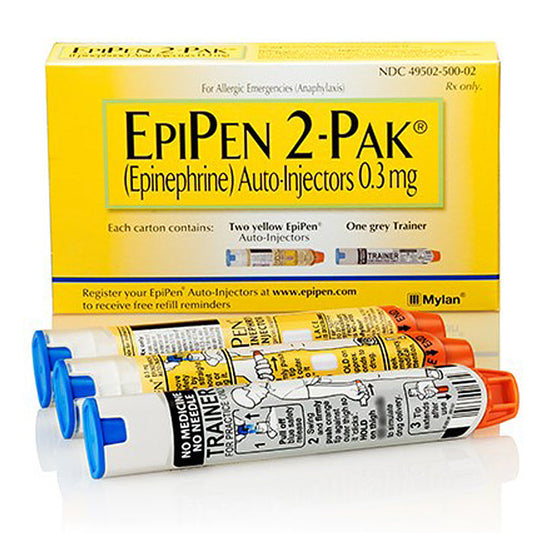
OSHA Regulations for First Aid
William BeauregardShare
OSHA Regulations
1910.151(b)
In the absence of an infirmary, clinic, or hospital in near proximity to the workplace which is used for the treatment of all injured employees, a person or persons shall be adequately trained to render first aid. Adequate first aid supplies shall be readily available.
OSHA's standard for first aid training in general industry, 29 CFR 1910.151(b), provides:
In the absence of an infirmary, clinic, or hospital in near proximity to the workplace which is used for the treatment of all injured employees, a person or persons shall be adequately trained to render first aid. Adequate first aid supplies shall be readily available.
In the construction industry, 29 CFR 1926.50(c) provides:
In the absence of an infirmary clinic, hospital, or physician, that is reasonably accessible in terms of time and distance to the worksite, which is available for the treatment of injured employees, a person who has a valid certificate in first-aid training from the U.S. Bureau of Mines, the American Red Cross, or equivalent training that can be verified by documentary evidence, shall be available at the worksite to render first aid.
The primary requirement addressed by these standards is that an employer must ensure prompt first aid treatment for injured employees, either by providing for the availability of a trained first aid provider at the worksite, or by ensuring that emergency treatment services are within reasonable proximity of the worksite. The basic purpose of these standards is to assure that adequate first aid is available in the critical minutes between the occurrence of an injury and the availability of physician or hospital care for the injured employee.
One option these standards provide employers is to ensure that a member of the workforce has been trained in first aid. This option is, for most employers, a feasible and low-cost way to protect employees, as well putting the employer clearly in compliance with the standards. OSHA recommends, but does not require, that every workplace include one or more employees who are trained and certified in first aid, including CPR.
Clarification of "in near proximity"
OSHA stated in a letter of interpretation dated January 16, 2007 to Mr. Charles F. Brogan: "The primary requirement addressed by these first aid standards is that an employer must ensure prompt first aid treatment for injured employees, either by providing for the availability of a trained first aid provider at the worksite, or by ensuring that emergency treatment services are within reasonable proximity of the worksite." The employer must ensure that ". . . adequate first aid is available in the critical minutes between the occurrence of an injury and the availability of physician or hospital care for the injured employee."
The letter further explains: "While the first standards do not prescribe a number of minutes, OSHA has long interpreted the term 'near proximity' to mean that emergency care must be available within no more than 3-4 minutes from the workplace. Medical literature establishes that, for serious injuries such as those involving stopped breathing, cardiac arrest, or uncontrolled bleeding, first aid treatment must be provided within the first few minutes to avoid permanent medical impairment or death. Accordingly, in workplaces where serious accidents such as those involving falls, suffocation, electrocution, or amputation are possible, emergency medical services must be available within 3-4 minutes, if there is no employee on the site who is trained to render first aid."
OSHA does exercise discretion in enforcing the first aid requirements in particular cases. For example, OSHA recognizes that in workplaces, such as offices, where the possibility of such serious work-related injuries is less likely, a longer response time of up to 15 minutes may be reasonable.
Question 1: How does the ANSI standard Z308.1-1998 relate to 29 CFR 1910.151(b)? In a non-industrial workplace (for example, a corporate office) where employees perform administrative duties and there are no specific employment-related injuries anticipated, would a kit matching the ANSI standard be sufficient for compliance with
Paragraph (b) of 29 CFR 1910.151 requires that in the absence of an infirmary, clinic, or hospital near the workplace, a person or persons must be adequately trained to render first aid. Adequate first aid supplies must be readily available.
ANSI standards become mandatory OSHA standards only when, and if, they are adopted by OSHA; ANSI Z308.1, Minimum Requirements for Workplace First Aid Kits, was not adopted by OSHA. However, ANSI Z308.1 provides detailed information regarding the requirements for first aid kits; OSHA has often referred employers to ANSI Z308.1 as a source of guidance for the minimum requirements for first aid kits.
The contents of the first aid kit listed in ANSI Z308.1 should be adequate for a small worksite. However, larger or multiple operations should consider the need for additional first aid kits, additional types of first aid equipment, and first aid supplies in larger quantities. You may wish to consult your local fire and rescue department, an appropriate medical professional, your local OSHA area office, or a first aid supplier for assistance in putting together a first aid kit which suits the needs of your workplace. You should also periodically assess your kit and increase your supplies as needed.
Are there any specific interpretations for the term “readily available”?
The term “readily available” is not defined in the standard. However, responding in a timely manner can mean the difference between life and death. Therefore, the person who has been trained to render first aid must be able to quickly access the first aid supplies in order to effectively provide injured or ill employees with first aid attention. The first aid supplies should be located in an easily accessible area, and the first aid provider generally should not have to travel through several doorways, hallways and/or stairways to access first aid supplies.



